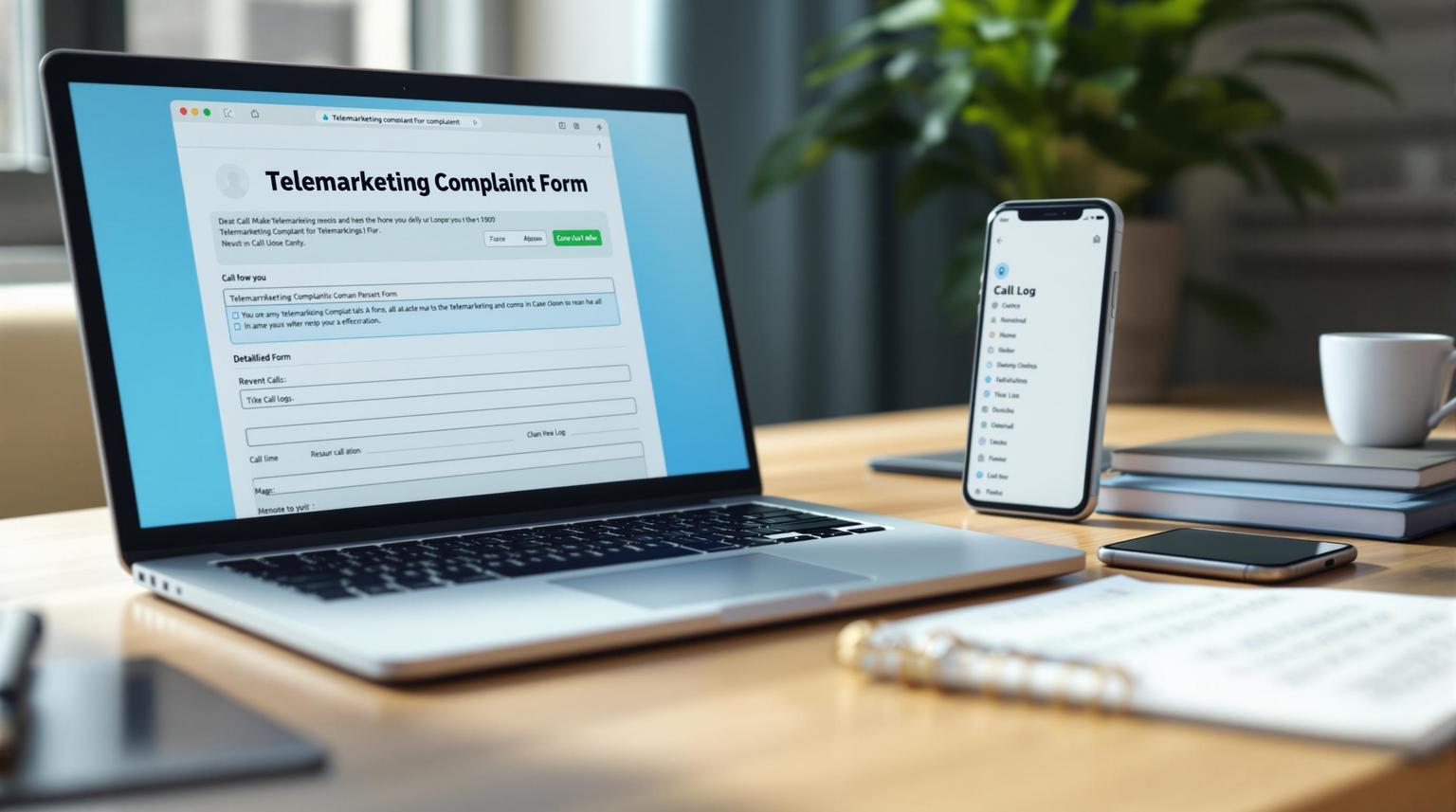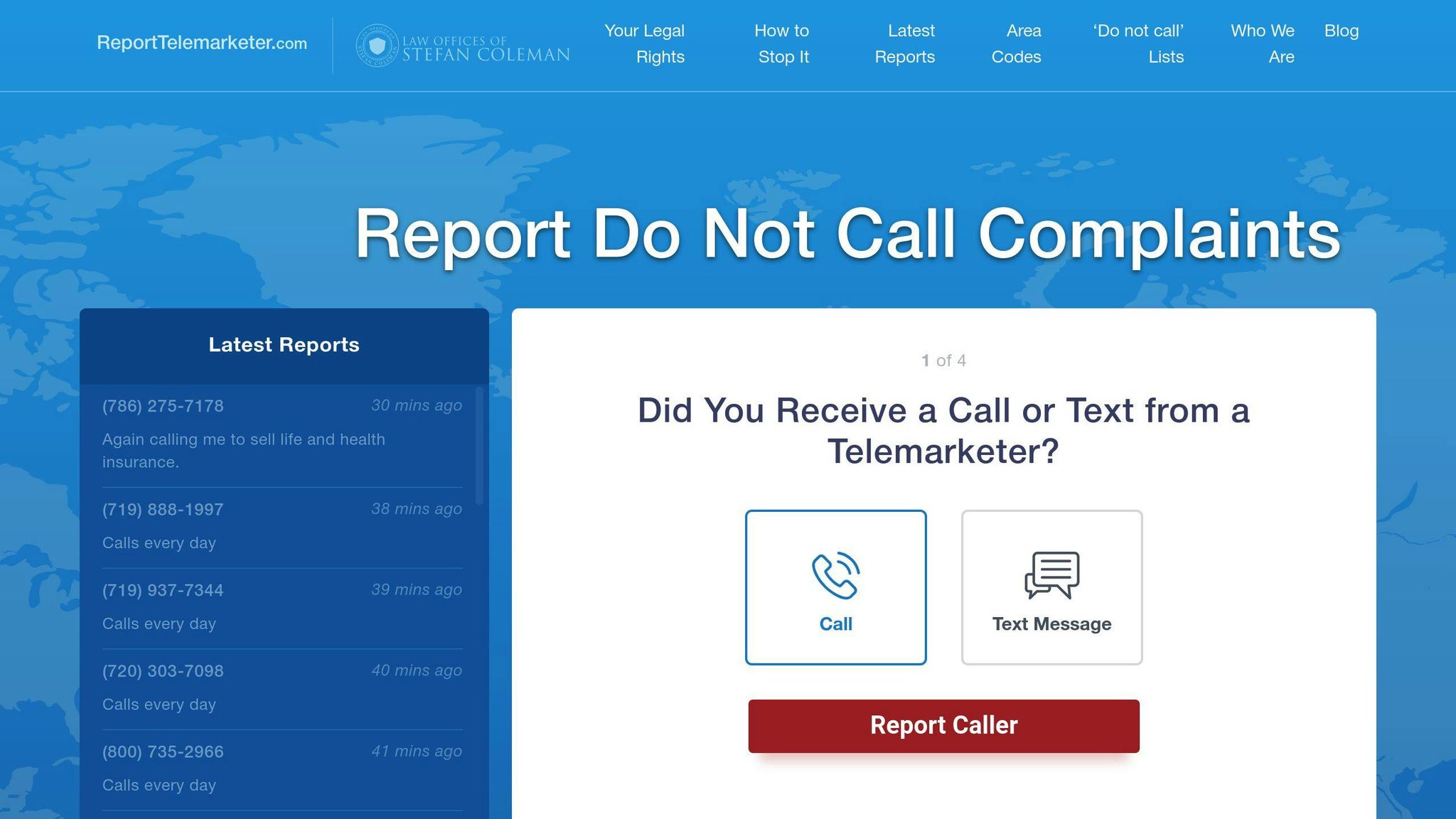
Tired of telemarketing calls? Here’s how to protect yourself and take legal action:
- Record Details: Save call logs, screenshots, voicemails, and texts with dates, times, and caller info.
- Write a Log: Note the company name, what was discussed, and whether you gave or revoked consent.
- Preserve Evidence: Use encrypted backups and secure storage for all digital and physical records.
- Report Violations: File complaints with the FTC, state agencies, or platforms like ReportTelemarketer.com.
- Consider Legal Action: Under the TCPA, you may be entitled to $500–$1,500 per violation with proper evidence.
Quick Tip: Tools like ReportTelemarketer.com can help you document, report, and pursue legal action without upfront costs. Start by keeping detailed records and securing your evidence.
How to Get Texts Admitted as Evidence in Court
Steps to Document Telemarketing Evidence
Properly documenting telemarketing calls is crucial for building a legal case. Here’s how to collect and preserve evidence effectively.
Saving Caller ID and Call Logs
Capture screenshots of incoming calls, making sure to include the caller’s phone number, date, time, duration, and any caller ID details. Cross-check this information with your phone carrier’s call logs to confirm accuracy.
Keeping Voice Messages and Texts
When saving communications:
- Voicemails and texts: Keep them with details like date, time, and sender information.
- Backups: Create copies of voicemails to avoid losing them when they auto-delete.
- Call recording: Use recording apps if your local laws permit it.
Writing a Detailed Log of Telemarketing Calls
Maintain a detailed record for each call, including:
- Call specifics: Date, time, duration, and the caller’s number.
- Caller details: The company’s name, the representative’s name, and what they were selling.
- Consent status: Note if and when consent was given or revoked.
- Call summary: A brief overview of the conversation.
- Follow-up actions: Track any requests to stop calling, complaints you filed, or responses received.
Update your log as soon as possible after each call to ensure accuracy. Tools like ReportTelemarketer.com can help simplify this process while ensuring you capture all the necessary details.
Once your evidence is documented, focus on proper storage and handling to maintain its integrity.
How to Maintain the Chain of Custody
Understanding the Chain of Custody
The chain of custody acts as a detailed timeline that records every interaction with your evidence, ensuring it remains intact and credible. This process is crucial for demonstrating that your evidence hasn’t been altered and can be used in court. It applies to all types of evidence, including digital files, screenshots, and call logs.
Keeping a reliable chain of custody is key to ensuring your evidence stands up in legal cases against telemarketers.
Tips for Storing and Handling Evidence
To preserve the chain of custody for telemarketing evidence, stick to these best practices:
Digital Evidence Protection
- Use encrypted backups on multiple storage platforms for added safety.
- Secure cloud storage with two-factor authentication.
- Keep detailed records of file transfers and sharing.
- Enable encryption for sensitive data.
Physical Evidence Management
- Store printed documents in chronological order in a secure, locked space.
- Separate original copies from working copies.
- Maintain a log of everyone who handles the documents.
| Evidence Type | Storage Method | Required Documentation |
|---|---|---|
| Digital Files | Encrypted cloud storage | Access logs, modification dates, backup locations |
| Voice Messages | Original + backup copy | Date received, transfer history, storage location |
| Text Messages | Screenshots + export files | Timestamp, phone number, backup verification |
| Call Logs | Digital + printed copies | Carrier verification, access records, storage details |
The Federal Trade Commission mandates that telemarketers retain records for 5 years. As a consumer, you should aim to keep your evidence for at least this long. Services like ReportTelemarketer.com can simplify this process by offering structured documentation tools and secure storage solutions for your evidence.
Critical documentation includes tracking evidence transfers, logging modifications, recording reasons for changes, and ensuring accurate timestamps – all while maintaining secure access controls.
Once your evidence is properly stored and its integrity safeguarded, you’ll be ready to report violations and explore legal options.
sbb-itb-a8d93e1
How to Report Telemarketing Violations and Take Legal Action
ReportTelemarketer.com: A Free Tool to Help You Fight Back

ReportTelemarketer.com is a platform designed to help consumers handle unwanted calls. It allows users to document these calls, investigate potential violations, and even take legal steps. Here’s how it works: users submit evidence of telemarketing violations, and the platform examines the details. Based on the findings, they can send cease-and-desist letters, file complaints, or pursue legal action – all without requiring any upfront payment.
Filing a TCPA Lawsuit
The Telephone Consumer Protection Act (TCPA) gives consumers legal options to address telemarketing harassment. Here’s a quick breakdown:
Damages and Compensation
Violating the TCPA can cost telemarketers $500 per call for standard violations. For intentional or willful violations, the fines increase to $1,500 per call. These penalties can stack up if there are multiple violations.
What You Need to File a Case
To build a strong case, you’ll need:
- Clear records of the calls you received
- Proof that your number is listed on the Do Not Call registry (if applicable)
- Evidence of automated calls or texts sent without your consent
- A well-maintained chain of custody for all evidence
Why Work with TCPA Attorneys?
Specialized TCPA attorneys bring expertise to the table, such as:
- Spotting cases with the best chance of success
- Navigating the complexities of TCPA regulations
- Negotiating settlements in your favor
- Handling cases involving multiple defendants
- Staying up-to-date on recent legal rulings
Proper documentation and evidence are critical. A strong chain of custody ensures your case meets the necessary legal standards. TCPA lawsuits typically involve several steps, including evaluation, filing, discovery, and either settlement or trial.
While these lawsuits are an effective way to address telemarketing issues, there are additional tools and platforms available to help you tackle the problem.
Other Resources for Dealing with Telemarketing Issues
In addition to filing lawsuits or using platforms like ReportTelemarketer.com, there are other ways to tackle telemarketing problems.
Filing a Complaint with the FTC
You can report telemarketing issues directly to the FTC at ftc.gov/complaint. Be ready to provide details like the date and time of the call, the caller’s number, the company name, and what was discussed during the call. Supporting evidence – such as call logs, voicemails, or screenshots – can make your complaint stronger. If you’ve already gathered evidence (as discussed earlier), use it to back up your report. The FTC relies on these complaints to track down repeat offenders and take action against them.
State Consumer Protection Agencies
Your state’s resources can offer localized help. Many states have Attorney General’s Consumer Protection Units and their own Do Not Call registries. These agencies investigate telemarketing violations and may offer tools like cease-and-desist orders or even mediation services. To find your state’s consumer protection agency, check the National Association of Attorneys General website. There, you’ll find information on how to report violations and access state-specific resources.
Using these options, along with thorough evidence and documentation, can improve your chances of stopping those unwanted calls. These tools not only amplify your voice but also increase the likelihood of enforcement against offenders.
Steps to Stop Telemarketing Harassment
Dealing with telemarketing harassment effectively requires keeping detailed records and reporting violations to the appropriate authorities. Building a strong case depends on how well you document and handle the evidence.
Start by collecting and organizing evidence like call logs, voicemails, text messages, and screenshots. Make notes about each interaction, including dates and times. Once you have everything documented, you can move forward by reporting the violations and considering legal options.
Keep your evidence stored securely and ensure that any handling of it is properly tracked to maintain its credibility in legal proceedings. For quick action, platforms like ReportTelemarketer.com can assist in reporting violations and initiating investigations. Their services have been especially helpful since the introduction of the STIR/SHAKEN rules, which focus on verifying caller ID information.
Use multiple channels to report violations while documenting your evidence. These include:
- The FTC’s complaint portal: Accessible at ftc.gov/complaint
- Your state’s Attorney General’s Consumer Protection Unit
- Specialized consumer protection services: Focused on telemarketing cases
Combining detailed documentation with these reporting methods boosts your ability to address telemarketing harassment. Laws like the TCPA and TSR provide strong protections, but they work best when violations are well-documented and reported. By staying informed about telemarketing regulations and using these steps, you can take control and reduce unwanted calls.
FAQs
What legal action can I take against spam calls?
If you’re tired of spam calls, you have options to take legal action. The Telephone Consumer Protection Act (TCPA) gives you the right to push back against unwanted telemarketing. For details on compensation and how to proceed, check out the "Filing a TCPA Lawsuit" section above.
Here are some steps you can take:
- File a TCPA lawsuit if your rights have been violated.
- Request a court order to stop telemarketers from contacting you.
- Seek monetary compensation for violations, provided you have proper evidence.
To strengthen your case, keep thorough records of all spam-related interactions. Here’s a quick guide:
| Evidence Type | What to Record |
|---|---|
| Call Records | Date, time, caller ID |
| Voice Messages | Full recording, timestamp |
| Text Messages | Screenshots, complete message thread |
| Written Logs | Details of the call, interaction notes |
For quick action, you can also use consumer protection services like ReportTelemarketer.com. They investigate and handle the legal process, often recovering attorney fees directly from the telemarketers.
"Under the TSR, sellers and telemarketers must keep records of telemarketing calls for at least 5 years from the date the record is produced. This includes records of each telemarketing call, advertising materials, and employee information."
Proper documentation is the cornerstone of a successful case. Partnering with experienced TCPA attorneys can further improve your chances of winning and securing compensation.